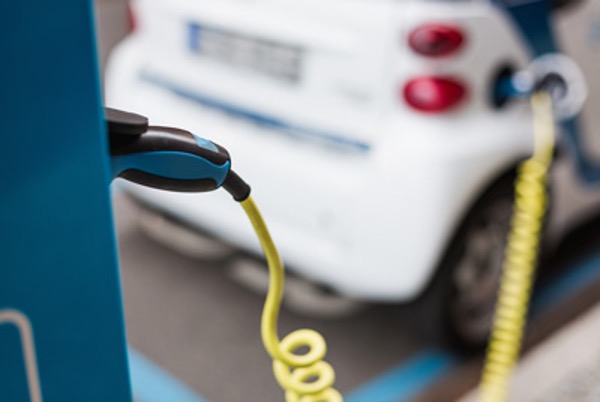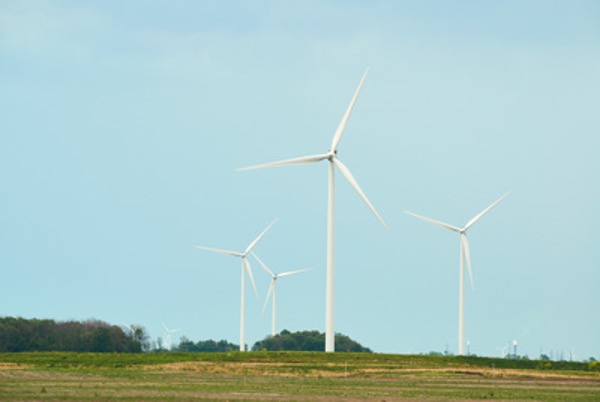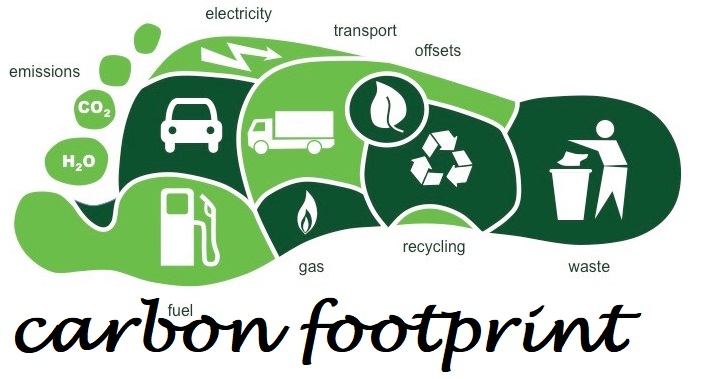What is a Carbon Footprint?
A carbon footprint is the total amount of greenhouse gases (including carbon dioxide and methane) that are generated by our actions.
Why it Matters
Offsetting your unavoidable CO2 emissions is a practical and immediate way to take ownership of your personal contribution to climate change. Offsetting also reveals both the need for cleaner energy sources and opportunities for reducing your carbon footprint.
Ways to Reduce Your Carbon Footprint
- Driving
- Air Travel
- Home Energy
- Food
- Other
- Offsetting
Reduce Your Carbon Footprint From Driving

- Alternatives to driving
When possible, walk or ride your bike in order to avoid carbon emissions completely. Carpooling and public transportation drastically reduce CO2 emissions by spreading them out over many riders. - Drive a low-carbon vehicle
High mileage doesn’t always mean low CO2 emissions. All vehicles have an estimated miles-per-gallon rating. Electric cars emit no CO2 if they’re charged with clean electricity. If you don’t charge it with your home’s solar panels AND live somewhere like WY, MO, WV, or KY you’re BETTER OFF with a hybrid or high-mileage gas/diesel car. - Get a hitch-mounted cargo rack
Don’t buy a minivan or SUV if you don’t need 4WD and/or will only occasionally need the extra space. A receiver hitch and a rack cost a few hundred bucks. Avoid roof-top boxes, which cost much more, increase aerodynamic drag, and decrease fuel economy. - Driving style
Speeding and unnecessary acceleration reduce mileage by up to 33%, waste gas and money, and increase your carbon footprint. - Tire inflation and other tuning
Properly inflated tires improve your gas mileage by up to 3%. It also helps to use the correct grade of motor oil, and to keep your engine tuned, because some maintenance fixes, like fixing faulty oxygen sensors, can increase fuel efficiency by up to 40%. - Avoid traffic
Being stuck in traffic wastes gas and unnecessarily creates CO2. Use traffic websites and apps and go a different way or wait. - Misc.
Combine errands to make fewer trips. Remove excess weight from your car. Use cruise control.
Reduce Your Carbon Footprint From Air Travel
- General
Until petroleum-based aviation fuel is replaced, you should avoid flying when possible, fly less frequently, fly shorter distances, and fly economy class. - Leisure Air Travel
Take fewer and longer vacations that are far away, and more frequent and driveable “staycations” closer to home. - Fly Fewer Round Trips
Consider renting a car or taking a train for half of your journey, and only fly the other half. - Work Air Travel
Increase your use of video-conferencing tools like Skype and Facetime. - What Class?
Economy class is best, for the same reasons as carpooling and public transportation. Each flyer’s share of a flight’s carbon emissions is relatively less because it’s spread out over more people. - That’s Economy class
When Prince William flies economy class, he’s leading by example. Then there’s Prince Alwaleed bin Talal al-Saud, or the Sultan of Brunei, who buys entire economy-size planes and convert them into flying palaces. - Don’t fly on Private Jets
In a sense, private jet travel is simply economy/first/business writ large: it should be minimized if not avoided. In terms of CO2 emissions per passenger mile flown, private jets result in the highest emissions by far. If you must fly on private jets, at least select a responsible provider, which enables you to calculate and offset your emissions. - Don’t buy a HondaJet. Their cars are fine, though.
- Don’t be a space tourist
Watch NOVΛ on PBS instead.
Reduce Your Home Energy Carbon Footprint
- Insulate and seal your home
Reduce drafts and air leaks with caulk, insulation, and weather stripping. Many states offer programs and incentives to facilitate this, and a great example is Energy Upgrade California. - Appliances
Make energy efficiency a primary consideration when choosing a new furnace, air conditioning unit, dishwasher, or refrigerator. Products bearing the ENERGY STAR label are recognized for having superior efficiency. - Lighting
Turn off lights you’re not using and when you leave the room. Replace incandescent light bulbs with compact fluorescent or LED ones. - Thermostat
Don’t set it too high or low. Install a programmable model to turn off the heat/air conditioning when you’re not home. - Solar
Add solar panels to the roof of your home. This costs a little more than the above options, but many providers offer financing options which minimize upfront costs.
Reduce Your Carbon Footprint From Food

- Eat locally-produced and organic food
It has been estimated that 13% of U.S. greenhouse gas emissions result from the production and transport of food. Transporting food requires petroleum-based fuels, and many fertilizers are also fossil fuel-based. - Cut the beef and dairy
It takes a lot of resources to raise cows, and it’s especially bad if you buy beef from somewhere like Brazil, where it was grazed on land that used to be tropical forest but was cleared for agricultural use. Deforestation is a top contributor to carbon emissions and thus climate change.
Other Ways to Reduce Your Carbon Footprint

- Water usage
Lower the amount of energy used to pump, treat, and heat water by washing your car less often, using climate-appropriate plants in your garden, installing drip irrigation so that plants receive only what they need, and making water-efficient choices when purchasing shower heads, faucet heads, toilets, dishwashers and washing machines. - Reuse and recycle
It has been estimated that 29% of U.S. greenhouse gas emissions result from the “provision of goods,” which means the extraction of resources, manufacturing, transport, and final disposal of “goods” which include consumer products and packaging, building components, and passenger vehicles, but excluding food. By buying used products and reselling or recycling items you no longer use, you dramatically reduce your carbon footprint from the “provision of goods.” - Support clean energy sources
Whenever you can, advocate for clean alternatives to fossil fuels, such as wind, solar, geothermal, and appropriately designed hydroelectric and biomass energy projects.
Spencer-SHE has been providing Safety, Health, and Environmental Compliance Guidance since 1980. Our team can advise on how to go beyond regulatory minimum requirements and set goals to reduce your carbon footprint.
Contact us here to help you to develop and maintain a safe and healthy workforce.
Sources:

